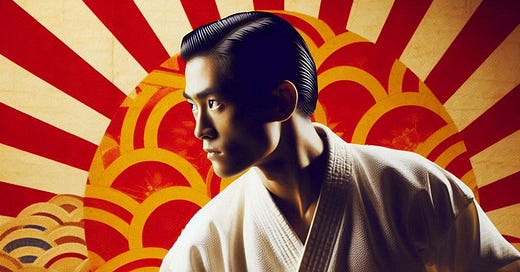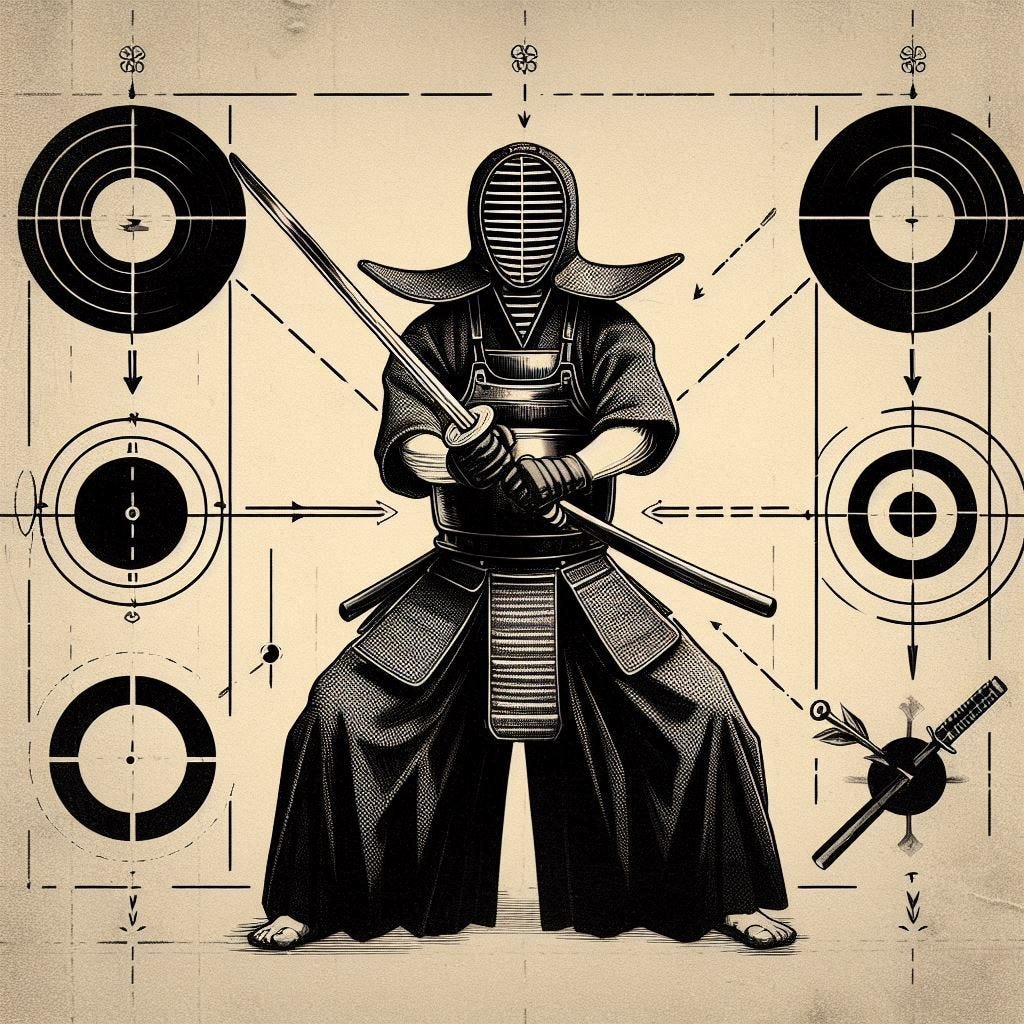Another Wado technical article on the premium section of this Substack project. To read this piece in its entirety become a paid subscriber; cheaper than a cup of coffee and certainly much less than martial artists ever paid for magazine subscriptions in the past. AND, because of the growing back catalogue of premium posts, it’s like getting access to a whole library of information.
In this article:
· What are we really aiming for?
· Suburi.
· Wado – Kihon as strike training.
· Rocky Balboa.
· Distractors, shockers, openers and disruptors.
· Atemi waza and how some of the variations work.
· The higher levels of operation.
· Is it possible to get the balance wrong? Has the tail been wagging the dog?
Intro.
Definition: ‘Pugilist is a fancy word for a boxer, one who indulges in the noble art of pugilism; or fighting with one’s fists’.
(Latin: Pug, pugnacious (always up for a fight), Pugus = fist).
He said, “It’s there to add more wallop to the punch”.
The words of another Wado Dan grade on an open course, referring to his body rotation in the paired kata of Kihon Gumite (specifically, the second move of Kihon Gumite Ipponme). He was my training partner for the day; however, I just didn’t agree with his rationale, but I kept quiet.
Why was all that power necessary? What lessons are we supposed to be learning? Are we perhaps ignoring how much Uke is contributing to his own downfall? All that energy he is supplying and we need to add ‘wallop’?
Maybe, in that situation it’s rather like the old saying; ‘If the only tool you have is a hammer, then everything looks like a nail’?
The bigger questions.
· What are we aiming to achieve within Wado?
· Are we primarily a striking style?
· Is our main objective to ‘add more wallop’?
There’s more to it than just punching (and kicking).
Take boxing as an example; at its highest level, it isn’t the raw pugilism we think it is. Boxing has always been considered as both a science and an art, something well beyond just brutally battering someone with your fists. But, with western boxing it all boils down to only four strikes delivered by two hands (jab, cross, hook, uppercut). Within that seemingly limited range there are actually amazing ways of setting up and delivering the hits. It’s a case of; imposed limitations forces creativity and variety (hence the science and the art).
It’s exactly the same with kendo, where there are only four strikes permitted (Men, Do, Kote and Tsuki).
An example; Suburi.
In kendo, kenjutsu and other systems there exists a form of solo training called ‘Suburi’ 素振りa method of practice striking. I first came across it in aikido, where we did repetitive overhead cuts with an extra heavy wooden sword which was called a Suburito. The additional weight turned it into quite a workout. It was explained to me that it was about strengthening the wrists and shoulders, as well as coordinating the body structure and stance, but also, controlling the heavy sword was a major challenge.
A short video giving an idea about how Suburi is looked on at a technical rather than an endurance level. However, this tutorial stresses the technical errors in form and power, something we didn’t dwell on in my Aikido training.
The nearest equivalent to this in boxing would be the heavy bag; but in Suburi there was seldom any contact (there was a form of fringe training where modern swordsmen would batter the hell out of a car tyre, a form of Tanren (forging)). Incidentally, in Aikido, there was also a Tanren-Bo, a monster version of the Suburito, more like a heavy oar for a boat.
For the swordsman, controlling the sword was more important than adding ‘wallop’, you don’t need wallop to cut (but you do need speed, as well as other qualities of coordination and control).
Boxers developed clever methods of practising the use of their two hands; the speedball (top and bottom) being one example, as well as more natural moving targets; hence the development of coach-held padwork.
In Wado karate – kihon as strike training.
Let me deal with this one:
Critics often like to take a poke at traditional karate people for ‘hitting air’, completely missing the point of formal training.





